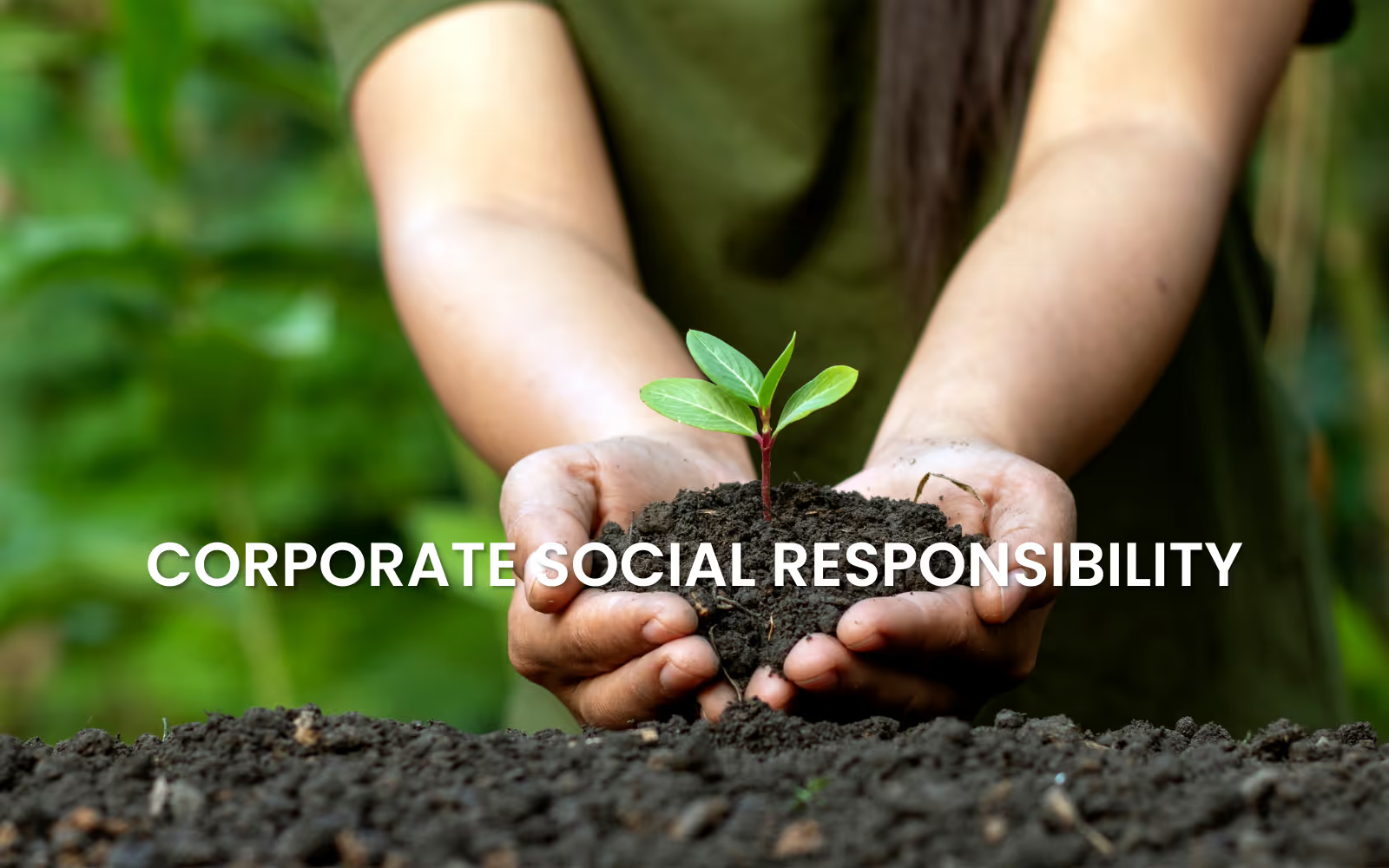How Can Corporate Social Responsibility Impact Loyalty Programs?

Since the fifties, Corporate Social Responsibility (CSR) has become an increasingly high priority for consumers and consequently, organizations.
When it comes to marketing, a company’s corporate citizenship is just as important as its customer service, quality of product and value for money.
Nearly 90% of consumers are prepared to choose who they shop with based on which brand stands up for an issue they care about.
So how does Corporate Social Responsibility fit in with a brand’s loyalty program and other customer retention strategies?
The Link Between CSR and Brand Loyalty
Brand loyalty is all about emotional connection. Customers who feel an emotional connection with a brand hold a 306% higher lifetime value and will recommend the brand 26% more than those who don’t feel the same emotional connection.
This kind of business-customer relationship can’t be achieved through generic advertising and flash sales. It’s achieved through offering a unique customer experience, and humanising your brand through CSR initiatives.
We’re not talking about simply charging customers a few extra cents for a plastic shopping bag when they forget to bring your reusable one. Not even offering a discount for bringing reusable mugs into the cafe instead of using a takeaway cup… we’re referring to finding a worthy cause that aligns with both your brand’s and customers’ values, and finding a creative way to integrate it into your loyalty rewards program.
As millennials take over an increasing share of spending power in the global market (an estimated $1.4 trillion by 2020), the emphasis on corporate social responsibility is rapidly rising.

Here are some statistics about millennial consumers that might convince you to incorporate some good CSR strategies into your loyalty program:
Four in every five millennials expect the brands they shop with to display good corporate citizenship, and two-thirds of them are prepared to switch to a more expensive brand that does so.
While the first stat here is hardly surprising, the second stat reveals that millennials are more than happy to put their money where their mouth is. It's pretty impressive considering that millennials are generally more stressed about their finances than previous generations.
Even when strapped for cash, millennials have a tendency to look for new and innovative ways to donate or contribute to a good cause. That being said, loyalty programs are the perfect platform for CSR.

Three-quarters of millennials believe that attending an event in person has more impact than taking action online.
This would suggest that brands also need to “walk the walk” rather than simply choose a cause to get behind.
Brands that take the effort to educate customers on a cause and illustrate how their contributions will help to resolve the issue, have a higher chance of winning their customers’ support and increasing brand loyalty as a result.
Global fashion chain H&M is very aware of this, and uses complete transparency as a customer retention tool. H&M releases an annual sustainability report for anyone to download and read as they please, which details H&M’s sustainable practices, goals, and progress.

Customers can also enjoy a 15% discount on H&M products when they bring in old, unwanted clothing to recycle.
40% of millennials refer to online peer reviews before making a purchase.
What’s this got to do with corporate social responsibility?
Well, what people are saying about you online is one (pretty major) aspect of your brand’s public image that can only be controlled through genuine customer satisfaction.
All the clever marketing campaigns and expensive advertising in the world won’t prevent consumers from trashing your business online if they aren’t satisfied with the company’s product, customer service, or corporate morals and societal values.

What people are saying about your company online is more important than ever – so make sure they’re not saying you lack good corporate citizenship!
Loyalty rewards are a bigger incentive for millennials to stay loyal to a brand than any other generation.
Given how partial millennials are to both CSR and loyalty rewards, it makes sense for brands to find creative ways to combine the two and offer an enticing loyalty rewards program that gives back to society and helps make a difference.
There’s no shortage of ways to do this. Below we’ve offered a few tips on how brands can use their loyalty programs to promote good corporate citizenship and enhance their public image:
Tip 1: Make supporting your cause as simple and convenient as your loyalty program (hopefully) is!
With 94% of millennials using coupons and preferring to store them digitally via mobile apps, it would seem the same demographic of consumers that are the most conscious about shopping with socially responsible brands are also engaging digital loyalty apps (like Starbucks Rewards or Domino’s, for example).

On top of being more socially responsible, consumers of today are increasingly convenience-oriented:
“Pay in advance through your mobile app to skip the queue”, “Order from your smartphone to enjoy table service”, “Track your order from your device so that you know exactly when it’s ready”…
The easier you make it for customers to feel good about their contributions to a good cause, the more success you’ll have in winning their loyalty.
Think about those UNICEF donation bins you see at major airports around the world, or the sealable envelopes in airplane pockets – this is a remarkably simple and convenient way for consumers to dispose of their leftover change from foreign currencies.
Any less than a few bucks and people are unlikely to bother exchanging it back to their local currency. It all ends up in the bottom of a dusty drawer at home.
In fact, Global Coin Solutions estimates that there is up to USD $10 billion worth of discarded foreign currency in US households!
But give those consumers a way to donate this quickly and easily, and it adds up… UNICEF has collected more than $140 million from airline passengers since 1987.

The same goes for McDonald’s clever “rounding up” initiative, where customers who use McDonald’s self-service tablets are asked whether they’d like to round up the price of their order from $9.65 to $10 (for example), and the extra $0.35 goes to the Ronald McDonald House Charities.
With 75 burgers sold every second in the burger chain’s almost 38,000 locations worldwide, a few cents here and there from 69 million daily customers is sure to make a colossal difference.
Businesses that incorporate fundraising and charitable contributions into the very fabric of their transactions (i.e. “a percentage of your purchase is being contributed to this cause”) enjoy an improved public image for CSR without requiring any form of commitment from customers.
Tip 2: Integrate automated prompts for rewards donation into your digital loyalty program
Allowing loyalty program members to donate their rewards to charity is a great way to incorporate CSR into your rewards program. It allows customers to make a monetary contribution to a cause without actually opening their wallets.
For example, instead of enjoying 25% off their next purchase, a customer might opt for paying the same amount as usual and have the 25% donated to a charity of their choosing.
Many American Express cardholders donate their rewards points to charity, which could be anywhere from a couple of bucks to $100.
With more than 110 million Amex cardholders around the world, there’s probably a significant amount of donations going to Breast Cancer Now, The Global Fund, Save the Children, NSPCC and Great Ormond Street Hospital.

Tip 3: Find a cause that your brand can make a real difference to – beyond just cash donations
When someone mentions water conservation, I generally think “shorter showers”, “watering the garden less frequently” and “waiting until the dishwasher is full to do a load”.
One thing that doesn’t spring to mind for me at least, is denim jeans.
However, the average pair of jeans requires about 1500 litres of water to be made before they end up on the shop shelf.
The finishing process, which gives jeans those trendy faded designs and dye patterns we all love so much, uses nearly 50 litres per single pair of jeans alone.
And of course, once you get this beloved latest addition to your wardrobe home, they’re going to need a wash every once in a while, resulting in a further 1500 litres or so throughout their lifecycle.

About 8 years ago, Levi’s launched the Water<Less collection and accompanying campaign, which has saved billions (literally, billions!) of litres of water in the production of jeans since 2011.
The Water<Less process saves up to 96% of the water typically used in denim finishing alone.
This campaign implores customers to wash their jeans a little less often, and offers sustainable alternatives like showering in your jeans to save water.
The fashion giant even offers various other water-saving tips that have nothing to do with the production of denim jeans. For example like collecting the initial cold water before the shower heats up and using it to water your plants.
Not only has Levi’s drastically reduced the amount of water used in the production of denim and challenged its customers to consume less water, but Levi’s is actually widely responsible for spreading awareness of the issue in the first place.

As water conservation becomes synonymous with Levi’s over time, consumers develop an emotional connection to the Levi’s brand, which in turn increases loyalty.
In this socially conscious era, customers would rather buy jeans from a sustainable brand over a cheaper one.
Good corporate citizenship + well-structured loyalty program = unwavering brand loyalty.
In a nutshell, corporate social responsibility and loyalty programs go hand-in-hand in encouraging customers to develop an emotional connection with your brand.

At Stamp Me Loyalty Solutions, we recommend first developing a well-structured and enticing rewards program, and then finding creative ways to implement your CSR initiatives into it.
Once you’ve achieved this, it’s all about effective marketing and regular maintenance of your loyalty program to ensure your CSR policies remain relevant and compelling.

Enter a few details based on typical customer behaviour to estimate the revenue uplift and ROI a loyalty program could deliver.






.webp)